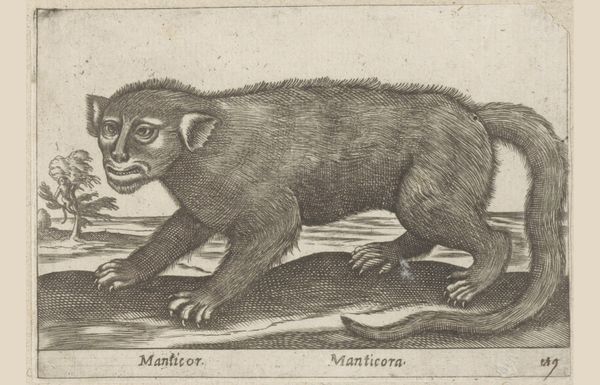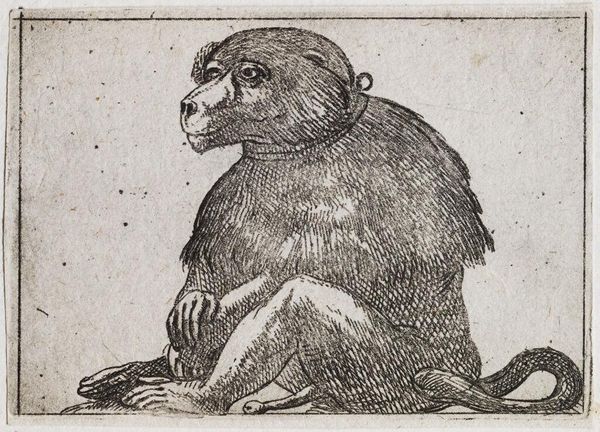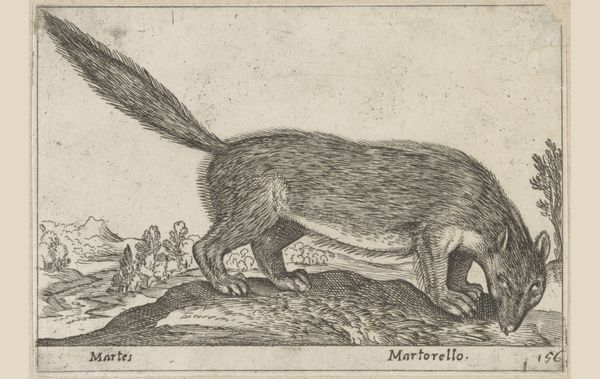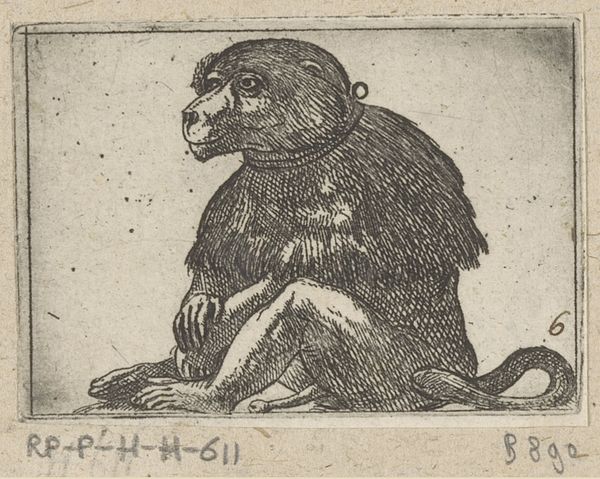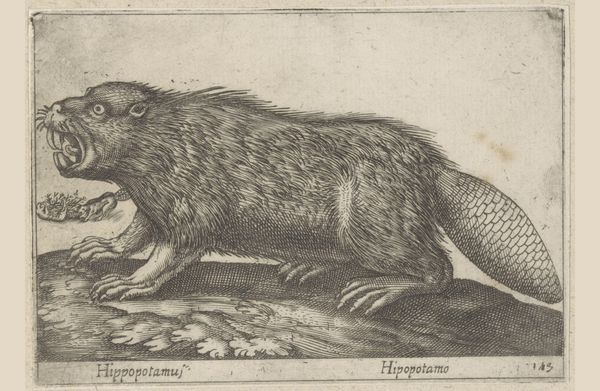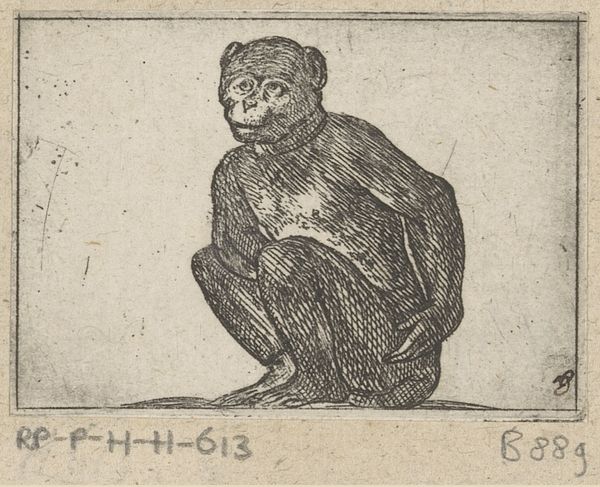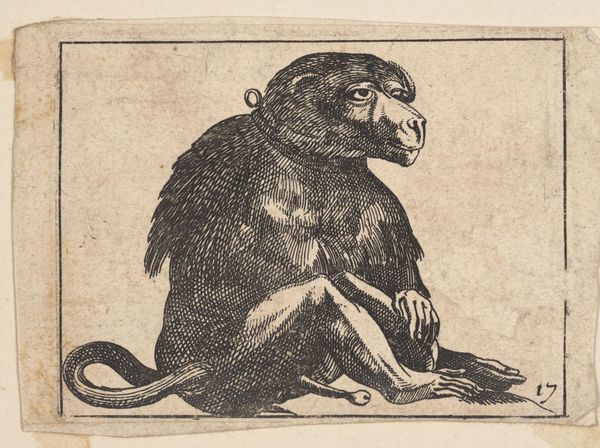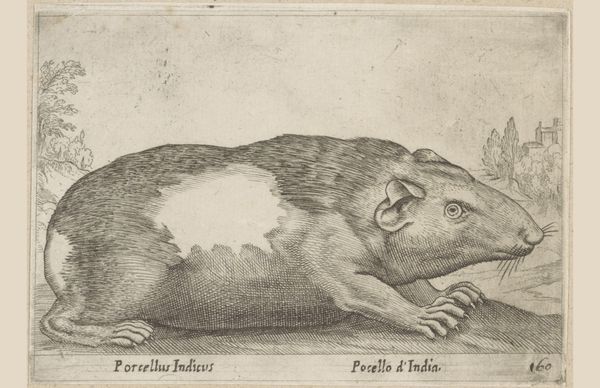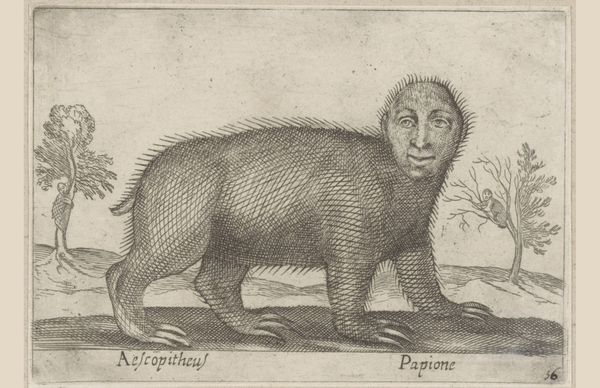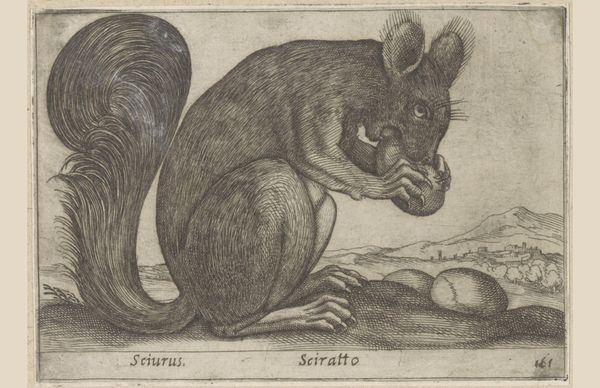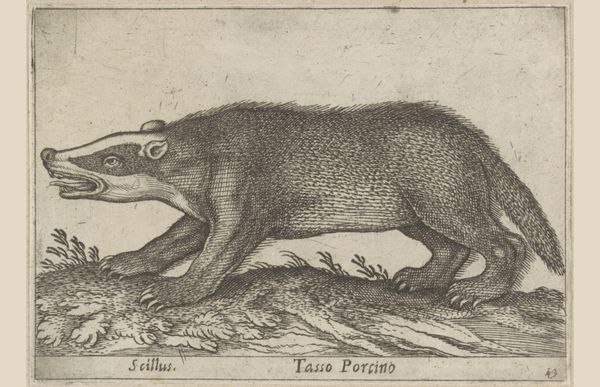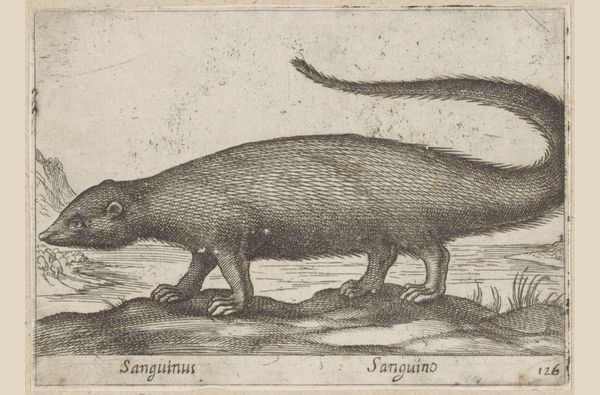
print, engraving
#
baroque
# print
#
engraving
#
realism
Dimensions: height 95 mm, width 137 mm
Copyright: Rijks Museum: Open Domain
Antonio Tempesta made this print of a Marmot sometime around 1600, using the technique of etching. Etching involves covering a metal plate with a waxy, acid-resistant substance, and then scratching an image into that surface. When acid is applied, it bites into the exposed metal, leaving behind an image that can be inked and printed. Look closely, and you can see the effect of this process. The bold lines describing the animal's fur, and the shading that gives it volume. The print medium was key to the circulation of knowledge at this time. It was a way of categorizing and understanding the natural world, with the marmot presented as a specimen for study, and an object of curiosity. And while Tempesta may not have considered himself a craftsman, his skill in handling the etching tools, transforms the print into something more than just a diagram. It becomes a work of art. It reminds us that even the most scientific-seeming images are shaped by the labor and skill of their makers.
Comments
No comments
Be the first to comment and join the conversation on the ultimate creative platform.
